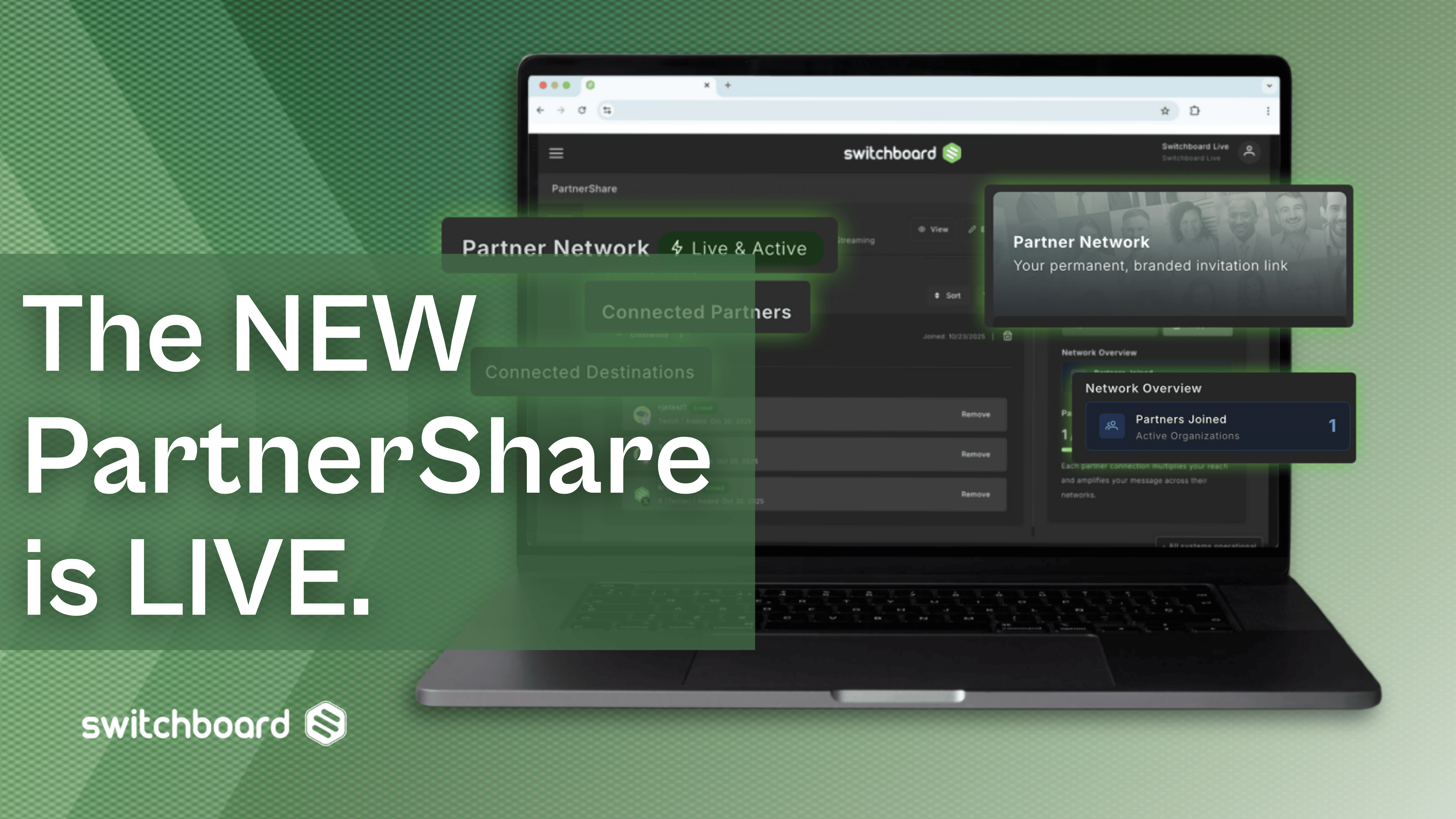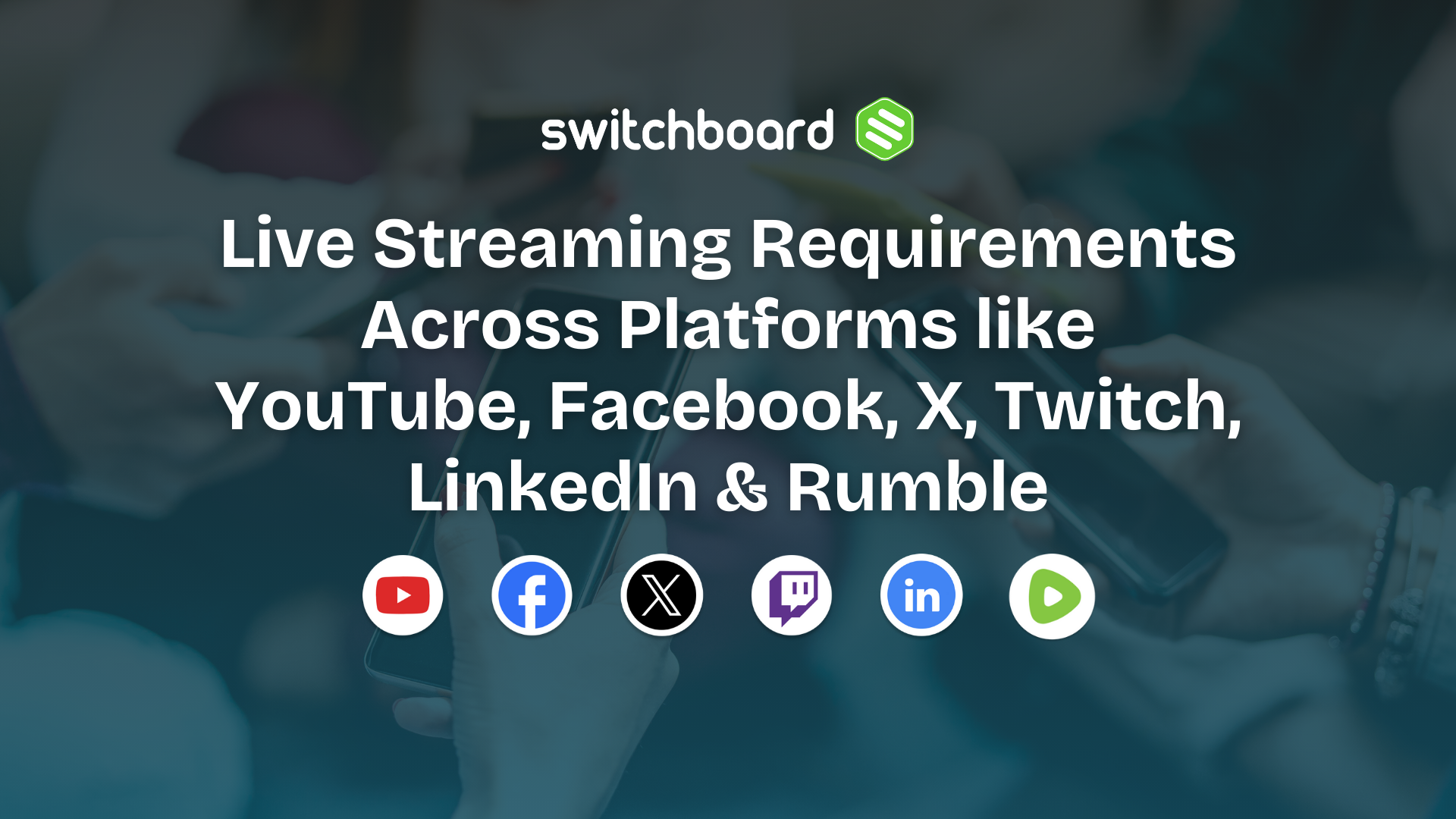When it comes to live streaming video, YouTube remains the industry giant. According to Alexa.com, YouTube is the second most visited website in the world, beating Facebook, Wikipedia, and Reddit for overall traffic.
But as it’s been said before: tactics without strategy is the noise before defeat. If you aren’t putting together a plan before your next live stream, your message could get lost among the other 300 hours of video uploaded per minute. Use these YouTube best practices to start getting in front of prospects and start converting leads into customers.
SEO Applies to YouTube Videos
The marketing department understands the importance of search engine optimization (SEO) for driving inbound leads. But are they on the same page with the live streaming strategy?
YouTube videos not only have an incredibly long life, but they also have implications on search traffic, as well. According to Hubspot, YouTube videos with optimized titles, descriptions, and tags get more views because they rank the highest in searches.
When considering YouTube best practices, take some time to decide on the topic and talking points before turning on the camera. From there, optimize the video with your company name and topic. This will push your video to the top during and after your live stream.

Stream During the Busiest Times
A stream is only good if your prospects and customers can watch it. Not streaming during peak times breaks YouTube best practices – not because of content, but because prospects are not online.
TrackMaven did a deep dive into key YouTube analytics, and discovered audiences are most active Monday through Wednesday between 2 and 4 p.m. EST, or Thursday and Friday between noon through 3 p.m. EST. Not only are these the best times to post videos, but are also the best times to stream because the audience is already waiting for a video.
It’s important to cast the widest net possible with every stream. Promoting and launching videos during the busiest hours can ensure the message gets out to as many targets as possible.

Guide the Audience with Story-Driven Narrative
Getting found by target audiences is not enough to keep them watching. As with every video, using a story-driven narrative can keep a target audience tuned in and engaged, from start to finish.
The Media Impact Project, part of University of Southern California (USC) Annenberg, suggests creating “specific, focused videos for YouTube”. Successful content includes a mix of evergreen webinars and informational streams, timely and topical news, and content that’s focused around holidays. Keeping in line with YouTube best practices, consider the challenges prospects fa ce today, and seasonally, and create a compelling message with the answer.
Search Engine Watch breaks this down to a simpler formula: Preview, Proof, Preview. Preview the topic at the top of the video, provide Proof through case studies or research and give another Preview on how your solutions provide the best solution to the target’s problem.

Interact with the YouTube Audience
The biggest advantage of a stream is the ability to interact directly with an audience and answer questions in real time. If a live video can’t help prospects with their burning issues, why should they come back to trust that company later?
Launching a YouTube stream is a team effort to write, produce, and monitor the live video. This means dedicating one person to watch the chat and forward important questions to the hosts. Exactly like streaming to Facebook and Periscope, YouTube best practices requires direct and real-time interaction with the audience. This can be as simple as answering questions, or shifting a message to be based on what the audience wants to know.
During the writing and planning process, plan dedicated times to answer questions and interact with the audience. This will not only encourage the conversation, but encourage prospects to enter the funnel and start down the buyer’s journey.

Optimize for the Small Screen
One misconception among YouTube best practices is that everyone is watching on their computers. But that’s simply not the case: Brandwatch statistics suggest more than half of users watch YouTube on their mobile phones.
This means any stream needs to be optimized for the small screen – not the big screen. This means no small print, no hard-to-read images, and no product demonstrations that are full of little details. Instead, everything should be big, bold, and easy to see and hear. By streaming with the small screen in mind, every video can be a winner across all devices.
Putting a stream live to YouTube doesn’t have to be complicated and can yield big results. By following these best practices, every stream can open a new conversion channel and convince targets to become customers.




.png)
.png)
.png)






